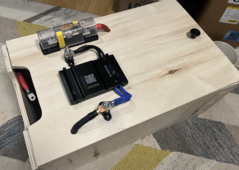offgrid-curious
New Member
I’m using ones similar to what you linked, with heat shrink. I bought a pack with various sizes, but I think those Wirefy ones should be good.
Trimming just barely does the trick, thanks for the suggestion!I'd just trim the insulator back a little bit.
Do not ask me how long I've been "building" my first battery.
Of course, it might make you feel better. And me worse!
I've had my cells for 2 years....
I completely understand the concern.It took me two years to build a shed and move my inverter in it after I decided I wasn't using batteries under my home roof. My cells sat disconnected.
Those Wirefy are the best connectors for balance leads that I have seen. But I was just looking at what you mean about trimming the insulation. I got it to move some when I heat shrunk them but I still think they might need some trimming.Trimming just barely does the trick, thanks for the suggestion!
Didn't even occur to me to try heat shrinking them. I'll give that a shot too.Those Wirefy are the best connectors for balance leads that I have seen. But I was just looking at what you mean about trimming the insulation. I got it to move some when I heat shrunk them but I still think they might need some trimming.
It’s a learning experience, nobody here picked it up in the first hour. Do it yourself also means do it your own way, there’s no right or wrong way to attach two wires together, as long as the result can carry the required current.I cannot believe how long this process is taking me.


Wires are 7 AWG. The terminal I tried is slipping on is rated for 4 to 6 AWG so slightly smaller than a regular 4 AWG however 7 AWG is 3.665 mm diameter (10.6588 mm²) and 4 AWG is 5.189 mm (21.15 mm²). 2 AWG is 6.543 mm (33.63 mm²). Biggest problem I saw was getting all those tiny wires into the 4 AWG terminal. Very tight and my biggest concern would be over crimping the connection leading to shear of strands leading to reduced connection strength (possible pull test failure) and reduced conductivity.IIRC the BMS wires are 7 AWG and when I was crimping them, they fit snugly into the 4 gauge lug. The single wires I used 6 AWG lugs.
Tiny zip tie around the wires, slide terminal on then snip the zip tie.Biggest problem I saw was getting all those tiny wires into the 4 AWG terminal.
I dug thru my terminals and found some 6 AWG and 4 AWG. I still think with both wires into a 4 AWG it will be overcrimped.Tiny zip tie around the wires, slide terminal on then snip the zip tie.
Video (with obnoxious music)

He's got the T-Class fuse as close as possible to the negative terminal, what's the difference?
I don't think it matters -- unless your negative is grounded: https://electronics.stackexchange.c...ted-to-the-negative-or-positive-terminal-of-aHe's got the T-Class fuse as close as possible to the negative terminal, what's the difference?
A fuse for overcurrent protection can be mounted anywhere in the circuit, the current is the same throughout the circuit.He's got the T-Class fuse as close as possible to the negative terminal, what's the difference?


